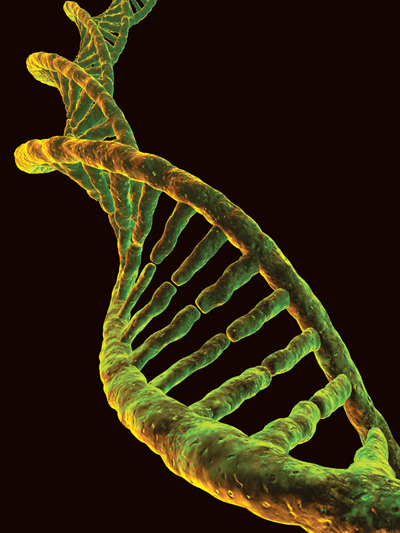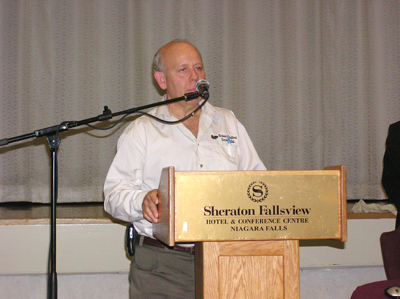
PIC Update: Improving Immune Function
By PIC
Features Profiles ResearchersAn integrated genetic approach for control of health and disease in poultry
Animal disease is associated with significant economic loss and public
health risks. There is growing evidence that selection for production
traits has simultaneously selected for decreased immune function in
birds.
Animal disease is associated with significant economic loss and public health risks. There is growing evidence that selection for production traits has simultaneously selected for decreased immune function in birds. Current preventive and treatment approaches for maintenance of chicken health appear to be inadequate against the existing or emerging pathogens. Moreover, there may be food safety risks associated with such interventions. There is therefore a need to find strategies that improve immune function and, as such, assess in detail immune responses.
 |
| Several genes involved in genetic resistance to MD were discovered within the chicken immune system. These genes may be used in the future for selection of disease-resistant birds, and other genes may be used as a target for development of more efficacious vaccines. Advertisement
|
With this in mind, Dr. Shayan Sharif and his research team at the University of Guelph have been studying genetic regulation of host resistance against infections, with the ultimate goal of using knowledge gained to improve genetic selection for disease resistance. Furthermore, the research team has been working toward elucidating mechanisms of immunity in chickens and employing these for designing novel vaccines against infectious disease.
The researchers decided to focus on Marek’s disease (MD), which is estimated to cost the global poultry industry $1-2 billion annually. Several vaccines are currently available for control of MD, but they are not effective against the emerging, more virulent, strains of Marek’s disease virus (MDV). In fact, there is evidence that MDV is increasingly gaining virulence and is now occurring in several provinces in Canada. Another objective of this study was to employ a genetic approach to better understand the gut-associated immune system of the chicken in order to develop better strategies for maintenance of gut health and, ultimately, control of foodborne pathogens in chickens.
Their findings? This project has resulted in development of a genetic-based strategy for evaluation of the chicken immune system status in health and disease. The researchers successfully constructed a DNA microarray – a collection of DNA fragments derived from chicken immune system genes – that could simultaneously measure activities of several immune system components and pathways. This microarray was employed to elucidate how the chicken immune system could be manipulated to enhance inherent resistance to MDV. Using this approach, several genes that are involved in genetic resistance to MD were discovered within the chicken immune system. These genes may be used in the future for selection of disease-resistant birds. In addition, the researchers discovered genes that may be used as a target for development of more efficacious vaccines against Marek’s disease. Overall, findings of this research should lead to improved chicken health, and, ultimately, enhanced food production, quality and safety. To read more about this work, please visit www.poultryindustrycouncil.ca.
Mucosal Immunity in Broilers in Response to Colonization by Campylobacter jejuni
Brenda Allan, and the Vaccine and Infectious Disease Organization, University of Saskatchewan
Campylobacter is a leading cause of bacterial gastroenteritis in humans in North America. Birds, including poultry used for food production, represent an important reservoir for C. jejuni. Handling of uncooked poultry meat and consumption of insufficiently cooked meat have been identified as significant risk factors for the transmission of Campylobacter to humans.
Chicks, at one day of age, are not colonized by C. jejuni, but by two weeks of age it is possible to detect colonization of some birds. The number of birds in a flock that are colonized increases with time. At the time of slaughter, between 30 and 100 per cent of flocks are colonized.
Mucosal immunity provides the first line of protection following oral exposure to pathogens such as C. jejuni. Dr. Brenda Allan and her research team at the Vaccine and Infectious Disease Organization, University of Saskatchewan, have been working on developing a detailed understanding of the mucosal immune response to this pathogen. Knowledge in this area is critical to the development of effective vaccination strategies.
Three trials were carried out in which groups of broilers were challenged with C. jejuni. In the first, birds were sampled between two and 21 days post infection to examine the development of antibodies. In the second, animals were sampled between six and 48 hours post infection to examine the innate immune response to colonization. In the third trial, the animals did not become colonized with C. jejuni following the challenge, so this trial did not generate any information.
Their results? Few to no antibodies against either whole or killed C. jejuni could be detected in the small intestine or bile, but significant levels were present in the serum. It was also found that C. jejuni seems to have developed the ability to hamper one of the important genes (IL8) responsible for initiating the innate immune response. Based on these results, the researchers believe that colonization of the gut of broilers results in very subtle changes in gene expression and the production of only low levels of antibodies at the mucosal surface. This knowledge is important for development of effective control strategies in the future. For more information on this research project, please visit www.poultryindustrycouncil.ca.
Poultry Worker of the Year
 |
|
| Brian Herman of Brian’s Poultry Services Ltd. was named the 2010 Poultry Worker of the Year by the PIC.
|
Brian Herman of Brian’s Poultry Services Ltd. was the recipient of the 2010 Poultry Worker of the Year award at the Poultry Industry Council’s Poultry Innovations Conference, held in Niagara Falls in November 2009.
Herman began his career in the poultry industry catching chickens, working out of a small mobile home in Mildmay, Ont., in the 1980s. Today, his business has expanded considerably. He’s still based in Mildmay, running catching crews out of Ontario, Western Canada and the United States.
Ed McKinlay, PIC chair, said Herman is a major contributor to the Ontario poultry industry and outlined some of his activities and achievements, which include: helping to review the Codes of Practice for Poultry; serving as a member of the Humane Transport Working Group; serving as a member of the Ontario Livestock and Poultry Council (OLPC); serving in the past on numerous PIC committees; and building and outfitting the on-farm mobile biosecurity caravan.
Also very near and dear to his heart is the Poultry Service Association (PSA), which finally formed in March 2009.
One of the major projects that Herman has been involved with is rewriting how we look at humane euthanasia of poultry, and to this end, he has recently created the BPMAC (Brian’s Poultry Modified Atmosphere Chamber), affectionately known as the “sleeper.” The sleeper is a mobile gassing chamber originally developed for the humane destruction of end of lay hens with liquid CO2, but it has been used as a test mule to evaluate nitrogen/CO2 and argon/CO2 compressed gas mixes for various poultry species.
McKinlay also noted the “invaluable” contribution that Brian and the “sleeper” played during the Pigeon King Challenge last year.
| PIC’s Picks There was something in the air at the first two producer updates to be held in more than two years. Whether it was a search for things new and interesting, or that energy generated when people with similar interests gather to listen, learn and question – who knows – there was decidedly a feeling of excitement and anticipation in Brodhagen and Guelph, Ont., in November as people rolled out in the fog and rain for the fall regional producer updates. More than 100 participants at these two events heard presentations given by many of the industry’s top experts on a wide range of topics. These included the regional disease updates (industry veterinarians Mike Joyce and Mike Petrik); raising poultry without antibiotics (Derek Detzler – Fisher Feeds); poultry nutrition, barn emissions and the environment (Drs. Steve Leeson and Bill Van Heyst); poultry in the local (locavore) market (John Groenewegen); water management (Leanne Cooley); oil pressing as a biofuel (Jasmin Hofer) and Al Dam in his inimitable way making it quite clear that occupational health and safety is a management challenge that we have to take very seriously at the farm. In fact, management was a theme that ran throughout the presentations: both vets stressed the importance of good chick management and the management challenges of treating some old disease challenges that are returning. No rocket science, just care and attention to detail – good animal husbandry. Leanne Cooley reinforced the messages around water management in Guelph. OMAFRA and PIC would like to thank all of our terrific speakers and also the sponsors for the Brodhagen and Guelph updates for their contribution and continued support to this worthwhile program, which couldn’t happen without them. We’re always looking for opinions and input from you, the producers, on topics you’d like to hear about or speakers you believe others would like to hear, so if you are interested in helping to plan any of these events, please contact PIC. The remaining producer updates for the 2009-2010 fall/winter season will be held on the following dates at these locations in 2010: January 21 – Belleville, Ont., March 23 – St. Catharines, Ont., March 25 in Ingersoll, Ont., Contact PIC for details – see you there. |
Print this page